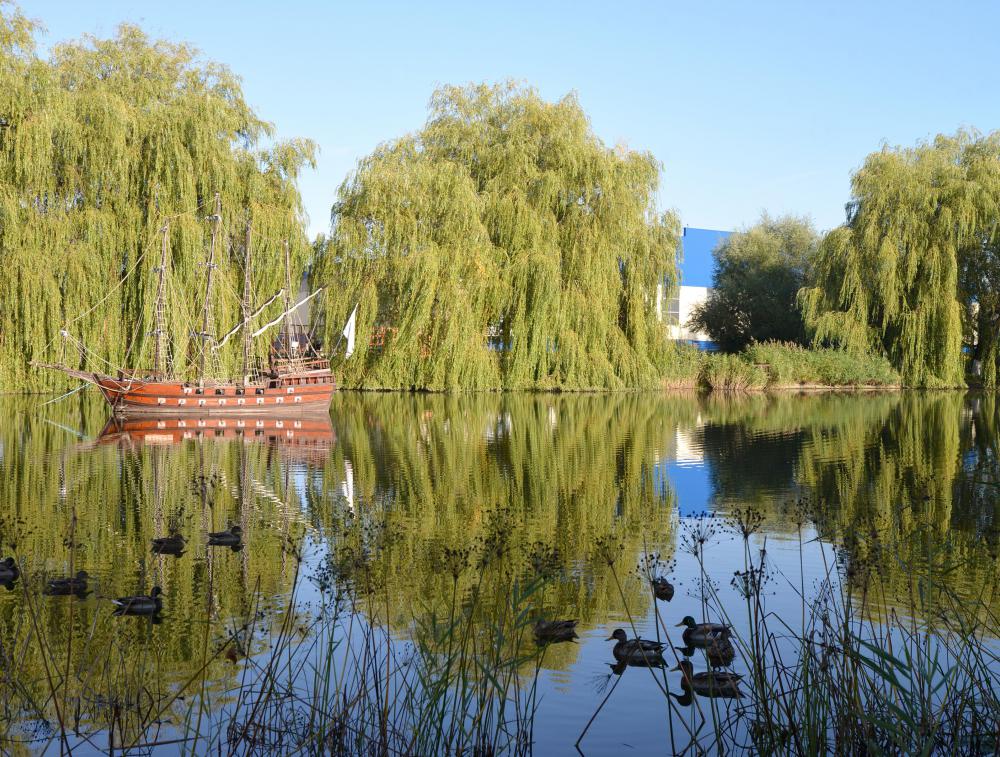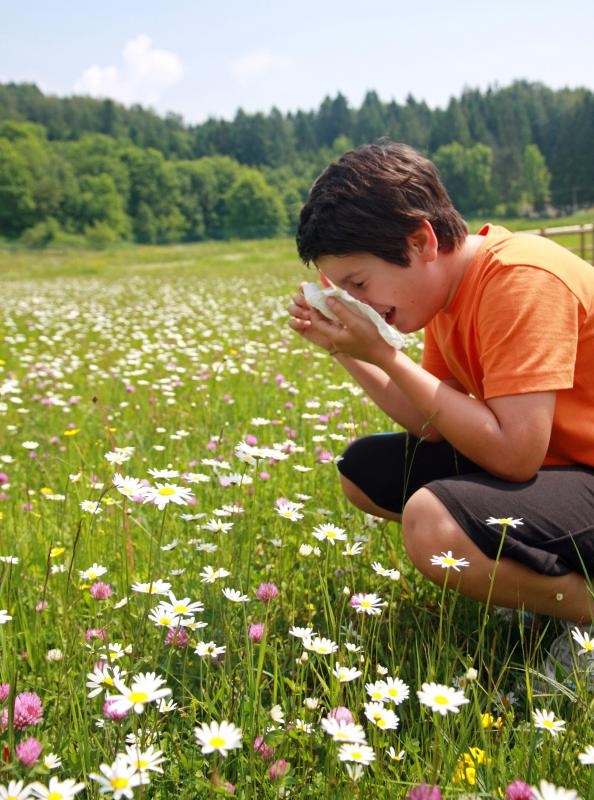At HomeQuestionsAnswered, we're committed to delivering accurate, trustworthy information. Our expert-authored content is rigorously fact-checked and sourced from credible authorities. Discover how we uphold the highest standards in providing you with reliable knowledge.
What is a Catkin?
A catkin, also known as an ament, is a dense, elongated, and drooping cluster of flowers without petals. Most commonly, the flowers found on a catkin are of one sex. In some trees, such as the poplar, both male and female flowers are present. Catkins are typically found on trees which are wind pollinated, such as oak, birch, willow, and hickory. A few herbaceous plants, like stinging nettle, also produce catkins.
Most catkins form prior to the foliage leaves, to allow for wind pollination. The wind carries pollen from a male or female catkin to a flower of the opposite sex, usually in a different form, such as a flower spike. In rare cases, catkins may be insect pollinated, but they most often rely on the wind to complete this process.

Depending on the specific plant, catkins will form in the late winter to late summer, and will produce flower clusters several weeks after forming. These flowers form into seeds near the end of the growing season, which is usually in the late fall for most trees. The seeds fall from the catkin, and if they survive, the growing process begins to form a new tree.

Each catkin contains small, modified leaves, known as bracts, which differ from the leaves found on the branches of the trees. They are a different color than the foliage leaves, a different texture, or sometimes both. Some catkin bracts act as attractors for insects, in the instance of insect pollination.
Catkins are typically found hanging down from the branches of the tree or shrub, but may grow erect in some trees, such as the white birch. Some catkins, such as the pussy willow catkin, will be covered in fine hairs before the flowers bloom. These hairs often obscure the small bracts of the catkin, and they are further diminished after blooming.

Manual pollination is also possible using a catkin. This is a popular practice for American flowering chestnut trees. A male catkin is harvested from one tree, and then carried by hand to a tree bearing a female catkin. The male catkin is rubbed against the female, until the pollen is depleted, and then the process is repeated as necessary.
Homeowners with catkin bearing trees on their property often find them a nuisance. They will emit large clouds of pollen when disturbed, and can clutter a yard once they’ve dried and fallen off the tree. However, their appearance is necessary to the reproduction of these plants.
AS FEATURED ON:
AS FEATURED ON:













Discussion Comments
I have always thought catkin trees looked beautiful but they wreak havoc on my allergies. I can't go neat the trees that produce catkins during the springtime because they make my eyes swell and I can't stop sneezing. They just produce so much pollen it is really incredible.
Recently we moved into a new house with a catkin-producing tree and I made my partner water the thing daily. I find that if the flowers are wet they don't coat you with pollen so easily. This may help you if you have allergies and the catkins are on your property.
I have always loved pussy willows and used to pick them near the stream on my grandmother's property as she had specifically planted them for the kids to enjoy. We were always fascinated by the soft texture of the heads while they were catkins and used to collect batches to keep. We must admit to petting them occasionally when no one was looking.
I think growing pussy willows is a great idea if you have children and want them to help with a plant that is interesting to look at and touch. They are pretty easy to grow and only needs lots of water and a good balance of shade and sun to keep them happy.
I have been considering getting a willow tree for artistic purposes. I have noticed that willow catkins are often the subject of photographs and paintings. The colorful catkins appear on willow trees in shades of yellow, green, and even black and make a striking foreground object against a background of out-of-focus leaves.
I love to paint and to draw with chalk pastels and acrylics. At local art festivals, I have noticed that artwork featuring local nature sells best. People in our area grow a lot of willow trees, so I'm thinking that willow catkin art will sell well.
Where I live, people sometimes go an entire spring season without washing their cars because of oak catkins. The pollen can coat a vehicle with yellow dust in just one day. Then, it can do its job and travel for miles, spreading out along the way.
Catkin pollen also travels via my Doberman. I can tell because her black fur develops green and yellow highlights in spring. Since she only has two speeds, ultra-fast and stationary, this pollen gets to travel in the wake of her speed and gets thrown off of her back by her sudden stops.
The oak trees in my yard produce catkins that drive my allergies crazy. During the season that these little pollen wads fly on the breeze, I have to remain medicated.
As a child, I had no idea what they were. I loved to catch falling leaves, and catkins inevitably came along with them. During a vacation break from school, I had one awesome day of leaf catching before I developed horrible sinus congestion and drainage, along with a very bad sore throat from the catkin catching. I have been wary of them ever since.
Post your comments